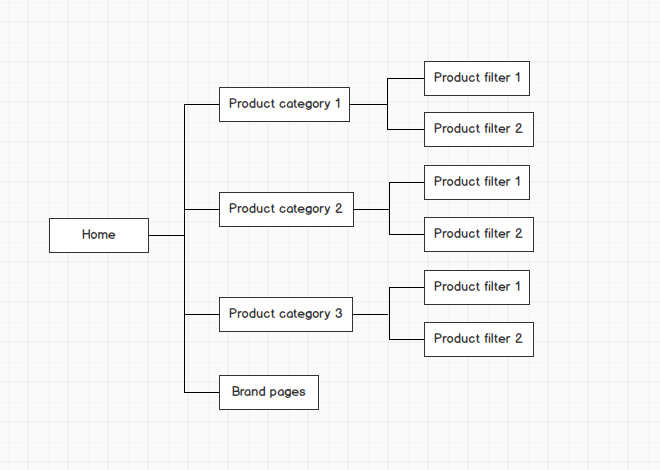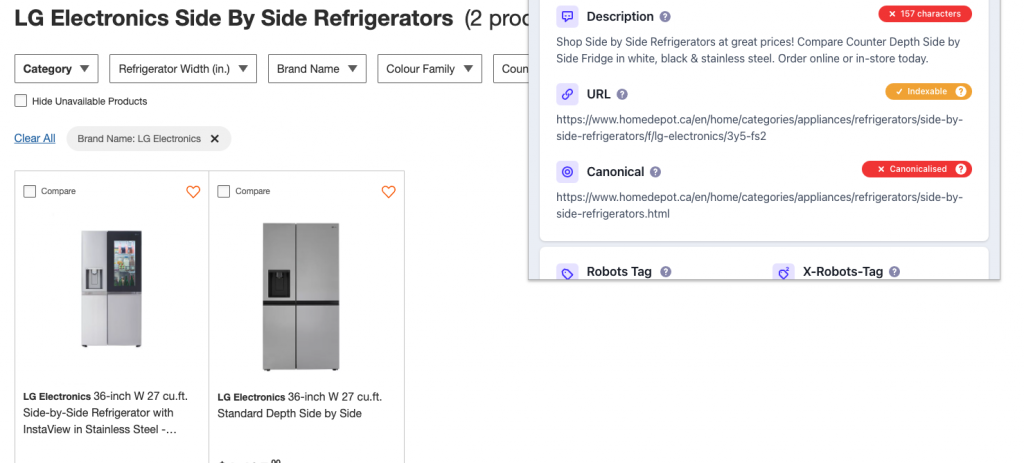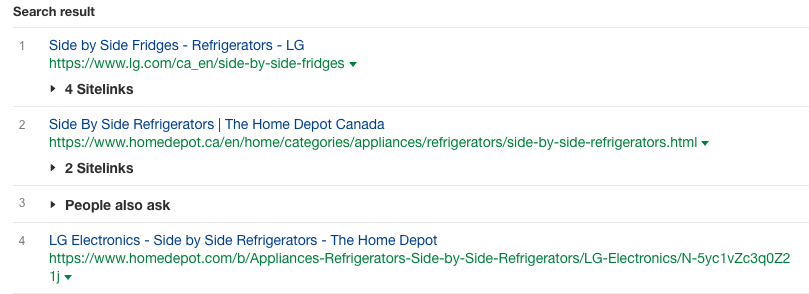Table of Contents
For this article, I want to talk about the ugly child of SEO, the dreaded canonical tag.
I’ve seen websites without canonical tags doing fine, and I’ve also seen large eCommerce websites completely botch their traffic by incorrectly tagging their category, filter and landing pages.
Most small businesses and random websites are okay if they don’t have canonical tags. How do I know? We still own a few websites doing very well without any canonical tags. It’s just not a priority to add these tags. Not yet, at least.
The risk of incorrectly implementing the wrong canonical tags on a large website with a complex sitemap is simply having the wrong page show up where it shouldn’t. You don’t want the wrong page competing for your money pages. There are no excuses for not having the correct tags on large websites.
This might hurt your revenue numbers. No one wants that. I know we’re very careful with our tags now. Specifically, with our revenue-generating web assets.
I know canonical tags seem trivial, right? You might think that you just pick a preferred page and tag it. What’s so difficult?
I’ll go over a few scenarios where we’re trying to implement canonical tags correctly. I’ll also share what some of the biggest websites are doing.
How I am planning our canonical tag strategy
Like many of you, I study the most successful websites on the web to learn. I also have run a few tests of my own, which have proven fruitful.
There are distinct guidelines. If you follow them, you won’t run into any issues with Google and what they decide to be the most important landing page to display on search.
Understanding your website architecture
You must understand your website architecture to canonicalise your pages correctly.
We all run into pages competing against each other. How you tell search engines which page to lean towards might have an adverse effect on your website. You can find competing pages in your search console and analytics accounts.
My plan
In our case, we have a few large websites so I’ve had a large playground to test ideas with.
For our newest project, we’re working on putting together thousands of products and dozens of landing pages.
Some of our pages will definitely compete against each other. Our team needs to be very clever about how to canonicalize our landing pages.
Let’s take a look at what I am talking about:

Our homepage will be canonicalized to itself, of course. Each product category will also canonicalize to itself. Certain product filters will canonicalize to themselves. Other filters will not be allowed to index.
We also have brand pages since we carry dozens of brands. These brand pages are canonicalized to themselves. Each link on these landing pages will send the visitor to specific filters on the product category pages, which is great for internal linking.
This website is more than a year old and we haven’t had any canonical issues so I would say this task can be ticked off.
How are larger websites handling their canonical tags
I admire the teams who work on large websites like eBay, Home Depot, Best Buy or Lowes. They’ve done a fantastic job with how they organize the massive amounts of information on their websites.
If you ever get stuck with your own websites, I recommend studying these websites like I am. You might get surprised at how they set up their SEO strategy.
Let’s look at my favourite website for SEO and how they set up their canonical tags.
Home Depot
Home Depot has always been one of my favourite websites in terms of SEO. They’ve definitely perfected their system for not only their customers but also search engines.
Let’s look at how they’ve set up their canonical tags (consider the sheer size of their website and what their SEO team has to do to scale everything).
We start our journey on their refrigerator category.

Everything looks good. This category is sel-referencing and that makes perfect sense.
Let’s select “Side-by-Side Refrigerators”.

Once again, we have a category page referencing to itself. Great! We’re on the right path.
Let’s break it down further. What if I select LG as a brand name?

Okay, now we’re seeing their canonical strategy. The Home Depot SEO team has decided to canonicalize brand filters a level up.
We’re not finished yet. I want to see if this filter is actually indexed on Google and ranking.

These are the national rankings results in Canada. As you can see, /en/home/categories/appliances/refrigerators/side-by-side-refrigerators.html is #2 with /b/Appliances-Refrigerators-Side-by-Side-Refrigerators/LG-Electronics/N-5yc1vZc3q0Z21j being next option.
Possible test: Would you think that if someone is searching for LG side by side refrigerator, you would want the filtered page showing up instead? I am not sure if they’ve already run this test or if it would create a massive development issue. I found this to be the case on all large eCommerce websites (Best Buy, Lowes). I might be missing something here.
Conclusion
I could write an ultimate guide to canonical tags but others have done a great job of that:
- https://ahrefs.com/blog/canonical-tags/
- https://yoast.com/rel-canonical/
- https://moz.com/learn/seo/canonicalization
I like sharing my own experience and how our efforts are being rewarded by search engines. All of my posts share this glaring fact. You’re reading and listening to people conducting real business and not just doing client work. That’s the value I bring here.
Also, what I’ve written about in this post has been in the back of my mind for months. I really want to test changing the filter canonical tags to different landing pages instead of the main category (head category) since it just might make more sense.
Hopefully, I’ve sparked a hypothesis in your mind. Catch you all on my next post.

